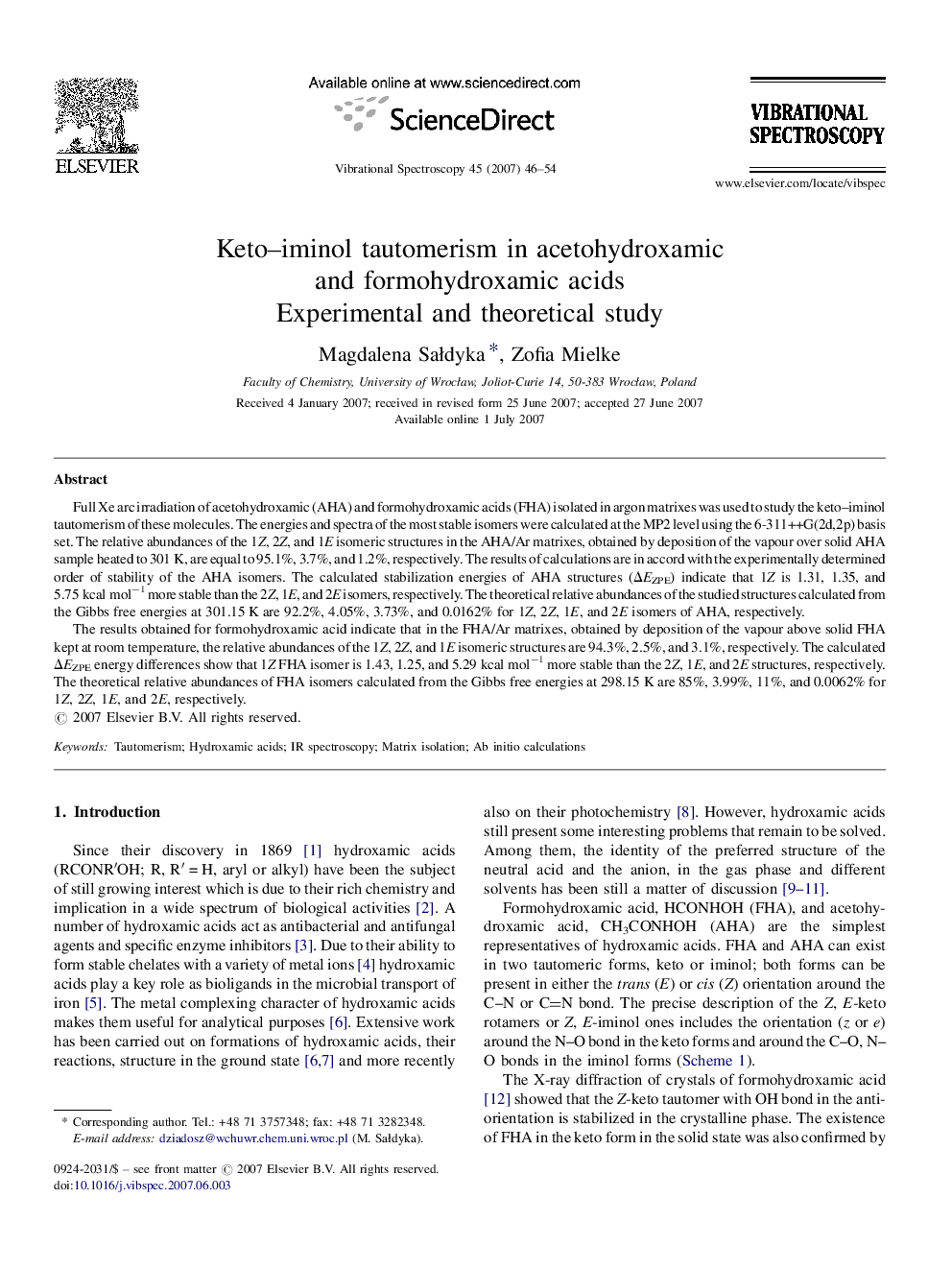| Article ID | Journal | Published Year | Pages | File Type |
|---|---|---|---|---|
| 1252175 | Vibrational Spectroscopy | 2007 | 9 Pages |
Full Xe arc irradiation of acetohydroxamic (AHA) and formohydroxamic acids (FHA) isolated in argon matrixes was used to study the keto–iminol tautomerism of these molecules. The energies and spectra of the most stable isomers were calculated at the MP2 level using the 6-311++G(2d,2p) basis set. The relative abundances of the 1Z, 2Z, and 1E isomeric structures in the AHA/Ar matrixes, obtained by deposition of the vapour over solid AHA sample heated to 301 K, are equal to 95.1%, 3.7%, and 1.2%, respectively. The results of calculations are in accord with the experimentally determined order of stability of the AHA isomers. The calculated stabilization energies of AHA structures (ΔEZPE) indicate that 1Z is 1.31, 1.35, and 5.75 kcal mol−1 more stable than the 2Z, 1E, and 2E isomers, respectively. The theoretical relative abundances of the studied structures calculated from the Gibbs free energies at 301.15 K are 92.2%, 4.05%, 3.73%, and 0.0162% for 1Z, 2Z, 1E, and 2E isomers of AHA, respectively.The results obtained for formohydroxamic acid indicate that in the FHA/Ar matrixes, obtained by deposition of the vapour above solid FHA kept at room temperature, the relative abundances of the 1Z, 2Z, and 1E isomeric structures are 94.3%, 2.5%, and 3.1%, respectively. The calculated ΔEZPE energy differences show that 1Z FHA isomer is 1.43, 1.25, and 5.29 kcal mol−1 more stable than the 2Z, 1E, and 2E structures, respectively. The theoretical relative abundances of FHA isomers calculated from the Gibbs free energies at 298.15 K are 85%, 3.99%, 11%, and 0.0062% for 1Z, 2Z, 1E, and 2E, respectively.
